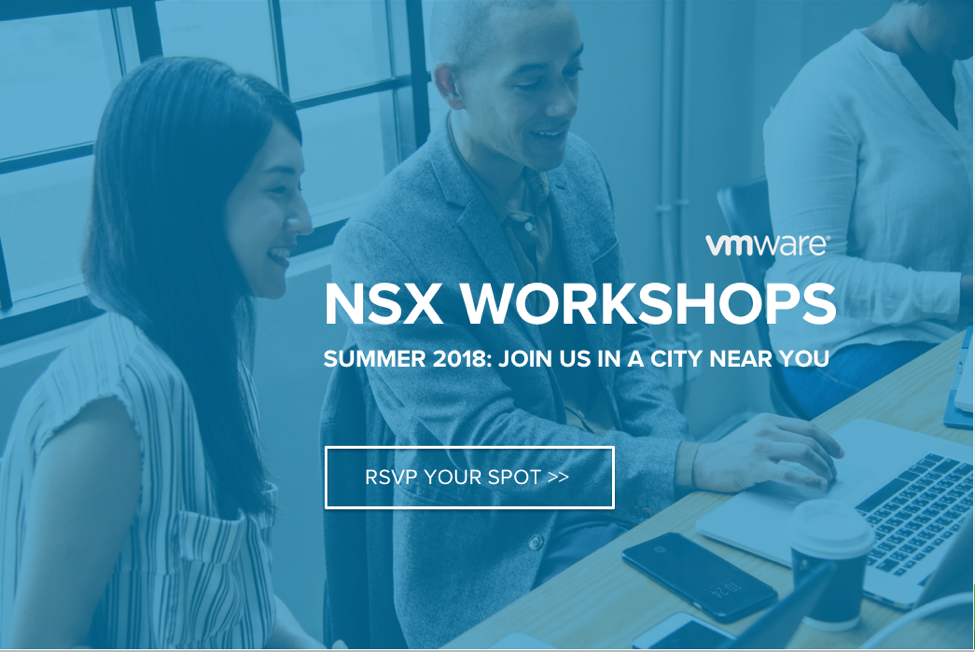Cisco Live Update – CAE Artist Schedule
The Cisco Live CAE artist schedule has been released! There will be two stages this year, the main stage and …
The post Cisco Live Update – CAE Artist Schedule appeared first on Fryguy's Blog.
VMware Puts Its Updated OpenStack Distro Under Its Telco NFV Group
 Its enthusiasm for the VIO 5 product stands in contrast to the OpenStack 2017 Summit where it seemed many people weren’t even aware that VMware had an OpenStack distribution.
Its enthusiasm for the VIO 5 product stands in contrast to the OpenStack 2017 Summit where it seemed many people weren’t even aware that VMware had an OpenStack distribution.
Cisco Live Information Update – Contest Info
Cisco Live is just a few weeks away as I write this and I am getting excited to see everyone …
The post Cisco Live Information Update – Contest Info appeared first on Fryguy's Blog.
Cloud Storage Adoption Soars in the Workplace
Spiceworks study finds more organizations using cloud-based storage services, with Microsoft OneDrive the top vendor.
Playing battleships over BGP
Playing battleships over BGP
BGP is the glue of the internet. For a protocol that was produced on two napkins in 1989 it is both amazing and horrifying that it runs almost all of the
Summer Gadget Guide for IT Nerds
Get ready for summer with these fun tech toys, practical gadgets, and labor-saving robots. Our list includes everything from waterproof speakers to a robotic lawn mower.
Response: Vendors Pushing Stretched Layer-2
Got this response to my Stretched Layer-2 Revisited blog post. It’s too good not to turn it into a blog post ;)
Recently I feel like it's really vendors pushing layer 2 solutions, rather than us (enterprise customer) demanding it.
I had that feeling for years. Yes, there are environment with legacy challenges (running COBOL applications on OS/370 with emulated TN3270 terminals comes to mind), but in most cases it’s the vendors trying to peddle unique high-priced non-interoperable warez.
Read more ...How U.S. Tech Firms Are Spending Their Newly Repatriated Cash
 Following concerns from Senator Marco Rubio that American companies are not using their repatriated cash to invest in the American worker, we looked into what seven tech companies are planning to do with the billions they brought back.
Following concerns from Senator Marco Rubio that American companies are not using their repatriated cash to invest in the American worker, we looked into what seven tech companies are planning to do with the billions they brought back.
What Drives IPv6 Deployment?
It's been six years since World IPv6 Launch day on the 6th June 2012. In those six years we've managed to place ever increasing pressure on the dwindling pools of available IPv4 addresses, but we have still been unable to complete the transition to an all-IPv6 Internet.Aerohive Challenges Cisco, Aruba With New A3 Network Access Software
Aerohive challenges Cisco ISE and Aruba ClearPass with its new A3 secure network access software.NSX Workshop: Secure App Infrastructure and Multi-Site Cloud Networking
[Summer 2018] Free NSX Training Workshop near you!
Secure Application Infrastructure and Multi-Site Cloud Networking
What: Attend a half-day lecture and lab designed to get you started with Micro-segmentation and Multi-Site Cloud Networking (Disaster Recovery).
Why: Not only will you get a business and technical overview of NSX Data Center, you’ll also receive hands-on experience with the products. We’ll make sure you leave knowing how NSX can help secure and extend your network across multiple sites, and into the cloud.
Sneak peek (full agenda in registration links):
- Security: Understand your network traffic flows and intelligently create security groups and policies, leveraging vRNI, Service Composer, and Application Rule Manager to secure your network.
- Disaster Recovery: Deep dive into multi-site NSX Data Center topologies, learn how to architect your network overlays, and gain visibility across your virtual and physical networks – all so you can build a resilient and flexible network.
RSVP your spot today (click below):
Link Propagation 119: Premium Links For The Discerning Technologist
Welcome to Link Propagation, a Packet Pushers newsletter. Link Propagation is included in your free membership. Each week we hand-select the most relevant practitioner blog posts, tech news, and product announcements. We age them in oak barrels for up to seven days and then distill them using ancient craft techniques handed down by Tim Berners-Lee. […]Weekend Reads 051818: Botnets and Throwhammer
Exploitation of Rowhammer attack just got easier. Dubbed ‘Throwhammer,’ the newly discovered technique could allow attackers to launch Rowhammer attack on the targeted systems just by sending specially crafted packets to the vulnerable network cards over the local area network. Known since 2012, Rowhammer is a severe issue with recent generation dynamic random access memory (DRAM) chips in which repeatedly accessing a row of memory Continue reading
Dell Still Pondering IPO, VMware Merger, Puts a New Option on the Table
 Under this scenario Dell would exchange its common stock, privately held by Michael Dell and Silver Lake, for shares of the company’s publicly traded VMware stock.
Under this scenario Dell would exchange its common stock, privately held by Michael Dell and Silver Lake, for shares of the company’s publicly traded VMware stock.
Microsoft and Dell Win Mega Cloud Deal With US Intelligence Community
 The contract comes as Microsoft competes against other cloud providers for a $10 billion Pentagon deal called JEDI.
The contract comes as Microsoft competes against other cloud providers for a $10 billion Pentagon deal called JEDI.
Rigado Packages IoT-Focused Edge-as-a-Service Platform
 The platform relies on Canonical's Ubuntu Core OS and Snaps application packaging system.
The platform relies on Canonical's Ubuntu Core OS and Snaps application packaging system.
